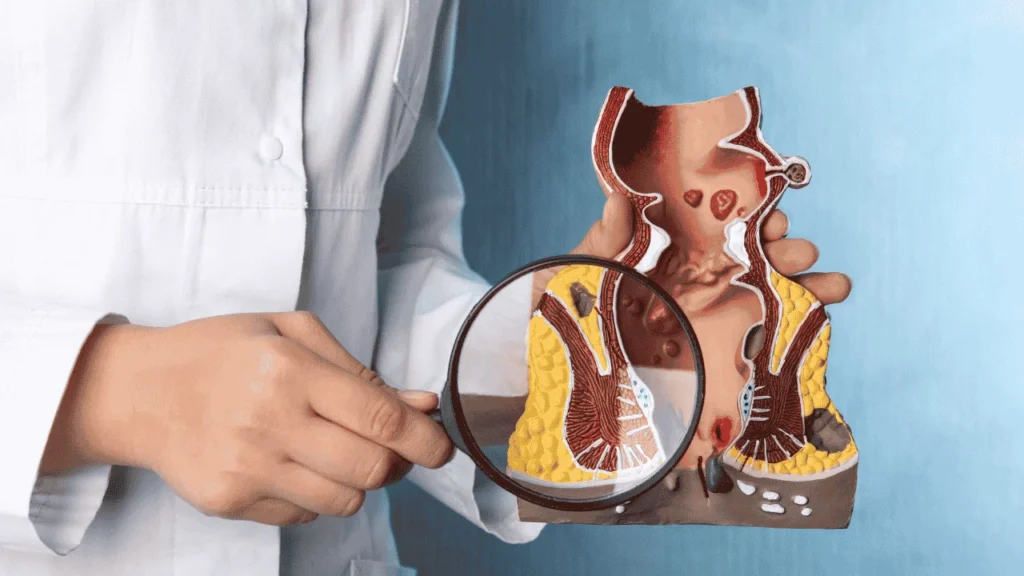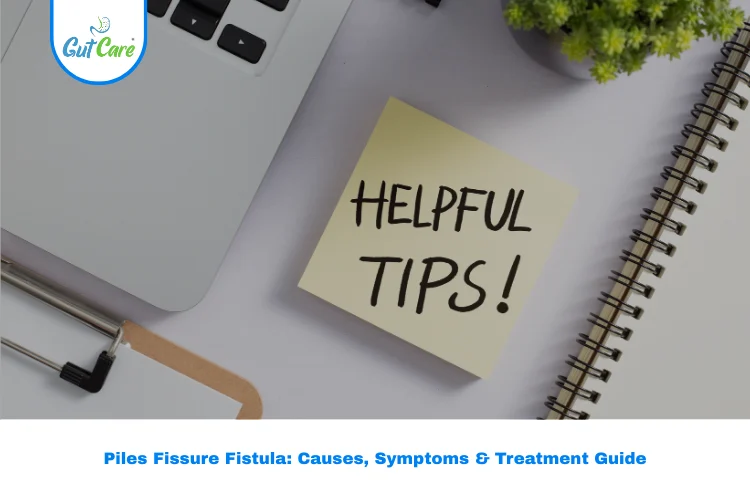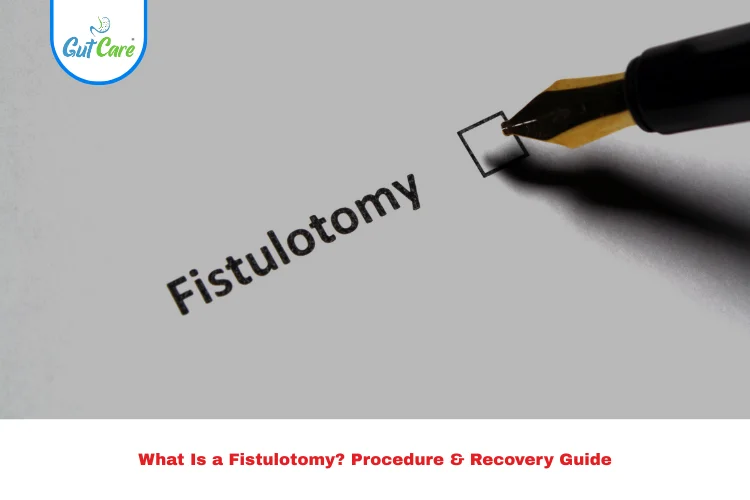Table of Contents
Introduction
Anal fistula treatment is crucial for addressing the discomfort and complications associated with this challenging condition. An anal fistula is an abnormal, tunnel-like connection that forms between the inner lining of the anus or rectum and the surrounding skin. It often results from an infection in one of the anal glands, which can lead to the formation of an abscess. If this abscess doesn’t heal properly, it can create a persistent tract known as a fistula.
Effective anal fistula treatment aims to alleviate symptoms such as pain, swelling, and irritation, and to prevent recurrent infections. This blog will guide you through the latest and most popular treatment options available, including non-surgical methods, minimally invasive procedures, and advanced surgical techniques. We’ll explore how each approach works and help you understand which might be best suited to your specific condition, ensuring you receive the most effective care for your anal fistula.
What is anal fistula ?
An anal fistula is an abnormal, tunnel-like connection that forms between the inner lining of the anus or rectum and the surrounding skin. This condition typically arises from an infection in an anal gland, leading to an abscess. If this abscess does not heal properly, it can create a persistent tract or passageway known as a fistula. Understanding anal fistula treatment is crucial, as symptoms such as pain, swelling, and discharge of pus or blood can significantly impact quality of life. Seeking timely anal fistula treatment is essential to prevent chronic discomfort and recurrent infections.

Symptoms of Anal Fistula
The symptoms of an anal fistula can vary, but common signs include:
- Pain: Persistent discomfort around the anus, which may worsen with activities such as sitting or bowel movements.
- Discharge: Continuous or intermittent pus or blood from the fistula opening, often with an unpleasant odor.
- Swelling and Redness: Inflammation around the anus, indicating potential infection.
- Irritation and Itching: Increased itching and irritation, exacerbated by discharge.
- Recurrent Abscesses: Repeated formation of pus-filled abscesses near the anus.
- Foul-Smelling Odor: An unpleasant smell due to the discharge.
- Difficulty with Bowel Movements: Pain or discomfort during bowel movements, sometimes accompanied by changes in stool consistency.
- Fever: Systemic symptoms such as fever may occur in cases of significant infection.
If you experience these symptoms, it’s important to seek appropriate anal fistula treatment from a healthcare provider.
Latest and Popular Treatments for Anal Fistula
When it comes to anal fistula treatment, a range of options is available:
Non-Surgical Treatments for Anal Fistula
1. Antibiotics
- Purpose: To manage and eliminate infection associated with the anal fistula.
- Usage: Prescribed by healthcare providers to reduce bacterial infection.
- Benefits: Helps control infection and prevent worsening of the anal fistula.
2. Sitz Baths
- Purpose: To soothe and clean the affected area.
- Usage: Recommended multiple times daily, especially after bowel movements.
- Benefits: Improves blood flow, reduces discomfort, and helps maintain cleanliness during anal fistula treatment.
3. Medications
- Purpose: To manage pain and reduce inflammation related to the anal fistula.
- Types: Pain relievers like ibuprofen and anti-inflammatory drugs (NSAIDs).
- Benefits: Provides symptomatic relief and improves quality of life during the anal fistula treatment process.
Minimally Invasive Procedures for Anal Fistula
1. Fistula Plug
- Purpose: To close the anal fistula tract and promote healing.
- Procedure: A biocompatible plug is inserted into the fistula to block and stimulate natural healing.
- Benefits: Minimally invasive with a high success rate for certain anal fistulas.
2. LIFT Procedure (Ligation of Intersphincteric Fistula Tract)
- Purpose: To treat anal fistulas by interrupting the tract while preserving sphincter function.
- Procedure: The tract is tied off and divided to promote healing from within.
- Benefits: Preserves anal function and is suitable for complex anal fistulas.
3. Fibrin Glue
- Purpose: To seal the anal fistula tract with a biological adhesive.
- Procedure: Fibrin glue is injected to close the tract and support healing.
- Benefits: Minimally invasive with a quick recovery time for certain anal fistulas.
Surgical Treatments for Anal Fistula
1. Fistulotomy
- Purpose: To open and treat the entire anal fistula tract.
- Procedure: The tract is cut open and allowed to heal from the inside out.
- Benefits: Effective for simple anal fistulas with a high success rate.
2, Seton Placement
- Purpose: To manage complex or high-risk anal fistulas by allowing gradual drainage.
- Procedure: A seton is placed through the tract to facilitate gradual healing.
- Benefits: Prevents infection and supports gradual closure of complex anal fistulas.
3. Advancement Flap Procedure
- Purpose: To repair the anal fistula using tissue from a nearby area.
- Procedure: Healthy tissue covers the anal fistula opening to encourage healing.
- Benefits: Effective for complex cases and helps preserve sphincter function.
What are the common symptoms of an anal fistula?
Common symptoms include persistent pain, discharge, swelling, irritation, recurrent abscesses, a foul odor, and difficulty with bowel movements.
How is an anal fistula diagnosed?
Diagnosis involves a physical examination and may include imaging tests like MRI or ultrasound to assess the anal fistula tract.
What are the treatment options for anal fistulas?
Treatment options include non-surgical methods (antibiotics, sitz baths, medications), minimally invasive procedures (fistula plug, LIFT procedure, fibrin glue), and surgical treatments (fistulotomy, seton placement, advancement flap procedure). Your healthcare provider will recommend the most suitable anal fistula treatment based on your specific condition.
How long does it take to recover from anal fistula treatment?
Recovery time varies by treatment type, with non-surgical methods having a shorter recovery and surgical treatments requiring several weeks to months.
Can anal fistulas recur after treatment?
Yes, recurrence is possible, especially in complex cases. Proper treatment and follow-up care can minimize the risk.
Are there any lifestyle changes or home remedies that can help manage symptoms?
Lifestyle changes include maintaining good hygiene, using sitz baths, and eating a high-fiber diet to prevent constipation.
How can I prevent anal fistulas from developing?
Preventive measures include good anal hygiene, avoiding trauma, managing underlying conditions, and prompt treatment of anal abscesses.
Conclusion
Effective anal fistula treatment requires a tailored approach based on the condition’s complexity and individual patient needs. From non-surgical methods to advanced surgical techniques, there are numerous options to address and manage anal fistulas effectively. At Gut Care Hospitals, we are committed to providing comprehensive care and personalized anal fistula treatment plans to ensure optimal outcomes. If you are experiencing symptoms of an anal fistula or need treatment, contact Gut Care Hospitals today to schedule a consultation. Our expert team will guide you through the most effective anal fistula treatment options and support you throughout your recovery. Your path to relief and recovery starts here.




